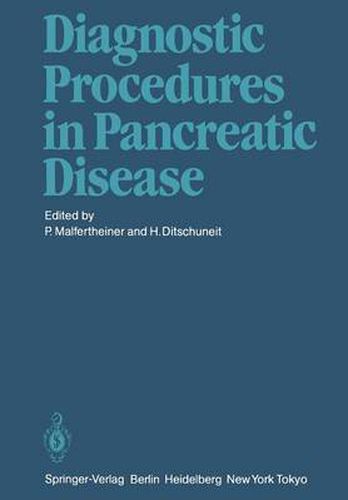Readings Newsletter
Become a Readings Member to make your shopping experience even easier.
Sign in or sign up for free!
You’re not far away from qualifying for FREE standard shipping within Australia
You’ve qualified for FREE standard shipping within Australia
The cart is loading…






This title is printed to order. This book may have been self-published. If so, we cannot guarantee the quality of the content. In the main most books will have gone through the editing process however some may not. We therefore suggest that you be aware of this before ordering this book. If in doubt check either the author or publisher’s details as we are unable to accept any returns unless they are faulty. Please contact us if you have any questions.
The development and improvement of new technologies have made pancreatic disease more accessible to diagnosis in the last decade. The cooperation and coordination of experts in the fields of gastro enterology, radiology, biochemistry, immunology, and pathology are necessary if the methods are to be made available and the progress made to be fully exploited. Each of the new methods requires special training, and extensive experience is needed to guarantee high standards in the diagnosis of pancreatic disease. New methods have to be tested carefully against established diagnostic procedures, though at the same time we must be ready to adopt a new approach to diagnosis. The aim of this book is to update the material already published and to focus on the various imaging methods and functional tests currently available, the features specific for each, and their integrative potential in the detection of pancreatic disease. The various pathologic findings are analyzed with reference to the clinical stages of pancreatic disease. As an introduction to the morphological and functional features of acute pancreatitis, chronic pancreatitis, and pancreatic cancer revealed by the different imaging methods and functional tests, basic knowledge of the patho-physiological and pathomorphological events is provided by research workers. This knowledge is essential for the understanding and interpretation of the diagnostic findings recorded in pancreatic diseases.
$9.00 standard shipping within Australia
FREE standard shipping within Australia for orders over $100.00
Express & International shipping calculated at checkout
This title is printed to order. This book may have been self-published. If so, we cannot guarantee the quality of the content. In the main most books will have gone through the editing process however some may not. We therefore suggest that you be aware of this before ordering this book. If in doubt check either the author or publisher’s details as we are unable to accept any returns unless they are faulty. Please contact us if you have any questions.
The development and improvement of new technologies have made pancreatic disease more accessible to diagnosis in the last decade. The cooperation and coordination of experts in the fields of gastro enterology, radiology, biochemistry, immunology, and pathology are necessary if the methods are to be made available and the progress made to be fully exploited. Each of the new methods requires special training, and extensive experience is needed to guarantee high standards in the diagnosis of pancreatic disease. New methods have to be tested carefully against established diagnostic procedures, though at the same time we must be ready to adopt a new approach to diagnosis. The aim of this book is to update the material already published and to focus on the various imaging methods and functional tests currently available, the features specific for each, and their integrative potential in the detection of pancreatic disease. The various pathologic findings are analyzed with reference to the clinical stages of pancreatic disease. As an introduction to the morphological and functional features of acute pancreatitis, chronic pancreatitis, and pancreatic cancer revealed by the different imaging methods and functional tests, basic knowledge of the patho-physiological and pathomorphological events is provided by research workers. This knowledge is essential for the understanding and interpretation of the diagnostic findings recorded in pancreatic diseases.